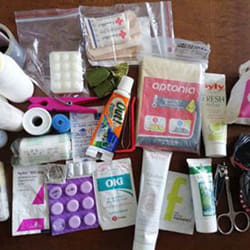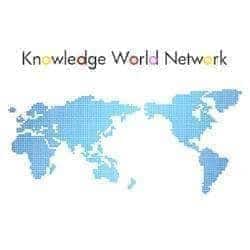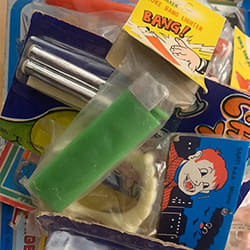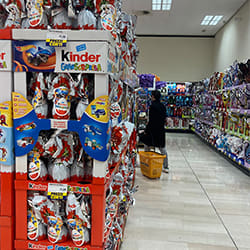One of them is the Archaeology Museum of Finale Ligure which offers guided tours and workshops for the little ones. Inside the museum there are artifacts, displays recreating life as it was in that era and findings of all kinds and there is even a tactile area for the little ones with the words ‘please do touch’ and large rooms for educational workshops open to schools and families upon reservation.
There are weaving, ceramics, toy-making, rock painting as well as excavations workshops...all designed to cater to different age groups and all led by specialized personnel including educators, researchers and archaeologists.
My family participated in the rock painting workshop, a very beautiful moment of parent-child collaboration.
Even closer to Genoa is the The Civic Museum of Paleontology and Mineralogy of the Municipality of Campomorone located on the top floor of the municipal headquarters building of the village.
Established in the 70s, the museum consists of three exhibition rooms, an educational laboratory as well as a room for audiovisuals and conferences. The fossils on display mostly belong to the Ligurian - Piedmontese basin and, overall, there are around 2000 pieces in the permanent collection.
A display case was subsequently created where some dinosaur specimens were reconstructed to scale. The biggest room is dedicated to the origin and evolution of man with particular reference to Liguria: through models they tried to reconstruct the type of life and settlement of our ancestors as it is possible to deduce from the various findings.
Even though the visit to the museum is completely free of charge when the museum is open to the public, recorded audio comments are available and make the visit easier to follow.
In the audio-visual room it is possible to view slides and films related to minerals and fossils.
The laboratory was created from the need to make children understand the daily life of prehistoric man, his work and his survival skills, through the use of prehistoric tools.
The paleontology teaching laboratory has been in operation since ‘87 and nowadays it offers several lectures every month or bimonthly and even different practical workshops are offered for students, children and families who sign up for the events about topics such as wheat grinding and cutting with an axe, skin scraping, ceramics, weaving, bone working, prehistoric shapes and colors, charred fruits and seeds.
All the workshops have some initial explanations in common: the most important aspects relating to the origins of man and prehistory in Liguria being illustrated; slides are shown on the evolution of prehistoric abilities, the tools used, their functions and the techniques for producing the artifacts being shown.
For 20 years now the Paleontology laboratory has been working in collaboration with the Earth Sciences laboratory, which offers students some activities aimed at studying and learning the following topics: the heart of the Earth, the shapes of the earth's relief, minerals, the recognition of rocks, sedimentary rocks, volcanic phenomena, igneous rocks and water.
The different themes are developed and explored in depth with different methods and tools depending on the age of the students.
At the end, in addition to any artifacts developed in the museum, each participant is given a laboratory guide to take home.
There is also the possibility of carrying out an excursion in the Campomorone area aimed at the direct observation of the phenomena analyzed in the laboratory.





























































